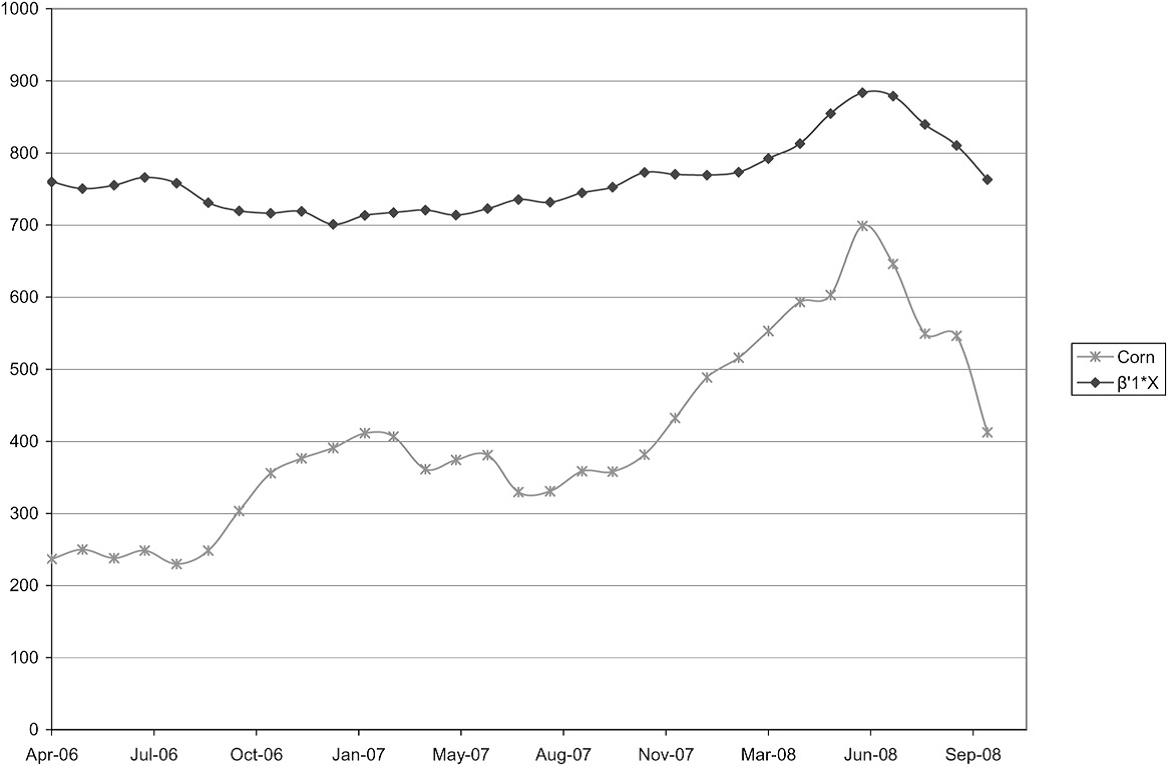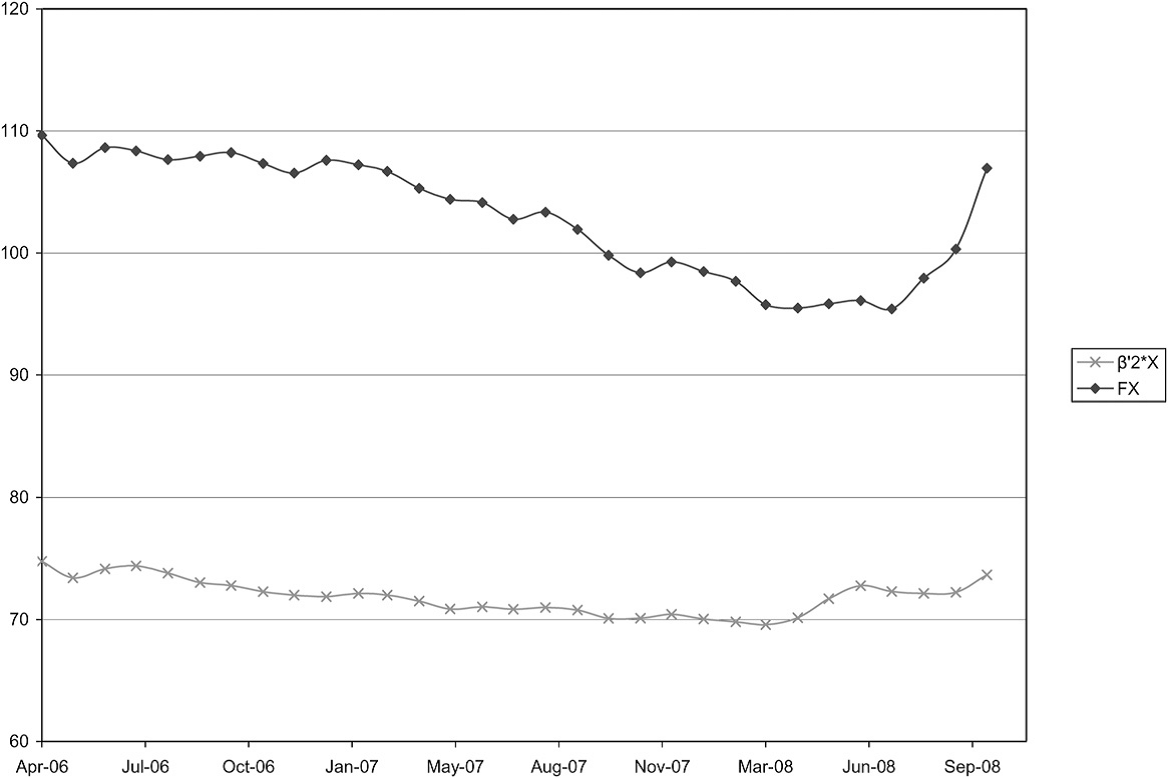Abstract
This report examines the relationship between oil prices and food prices with an objective of establishing their relationships. The rise in the price of oil greatly contributed to the increase in food prices. Since many sectors such as transportation and food-processing plants need oil to undertake their operations, increased fuel prices compelled them to increase the cost of food to meet their production costs.
Introduction
The prices of food depend on a number of factors that dictate the food market and production sectors. Some of the factors that dictate the prices of food include the cost of production, transportation cost, and the quality of finished products. Remarkably, production cost is greatly dependent on the cost of oil, which is a major component used in food production.
An increase in the price of oil results in a corresponding increase in prices of food. Hence, control of food prices can effectively occur if the stakeholders in food industry check the cost of oil and minimize the expenditure incurred in transport, refinement, and supply of oil. Therefore, the report examines the control of food prices using oil prices.
How oil prices increases food prices
Complex Relationships

Food Production
An increase in oil prices leads to a proportional rise in the cost of food production. Since the price of many facilities used in the process of production increase, the overall cost of production has risen. Suppliers increase the price of raw materials due to the rising cost of oil and petroleum products.
The increased price of raw materials occasion due to a rise in the cost of transport used in the supply of the raw materials. According to Nazlioglu (2011), the cost of oil has a major impact on the cost of agricultural products. Since agricultural products comprise the majority of food products, an increase in their prices leads to increased production cost of food products.
Increase in the Cost of Farm Inputs
The cost of farm inputs such as pesticides, herbicides, and fungicides increase due to the augmented cost of oil. The rise in the cost of farm inputs is directly related to the cost of producing the inputs.
Since oil is a major component used in the production of farm inputs, changes in fuel prices lead to a proportional impact on the production cost of agrochemicals, and hence, the cost of farm input increases. According to Otsuka and Yamano (2005), The effets of high cost of farm inputs are more prevalent in developing countries and affects the economic development. The high dependency on the use of oil and petroleum products implies that an increase in the price of the product translates to an equivalent rise in the cost of argrochemicals.
Increase in the Cost of Transport
The transport cost is highly dependent on oil because fuel is the major source of energy used in the transport sector. The automobiles used in the supply of food and other production requirements utilize fuel to ferry goods from one point to another. Therefore, a rise in the cost of fuel has a direct effect on the cost of transport.
Producers and suppliers incur high costs due to increased cost of oil. Therefore, it is clear that the rising cost of food and demand for farm inputs has a direct relationship to the rising cost of oil (Timmer, 2010). Additionally, transport facilitates delivery of finished food products from the point of production to the location of delivery. Hence, an augmented price of oil greatly affects the cost of supply and delivery of food products.
Effects of high food prices caused by high oil prices
Effect of High Food Prices on Societies
One of the most vital factors to understand is that the increased cost of fuel does not only affect the economies of countries and businesses, but also affects societies. Due to the increased cost of fuel, which initiates high food prices, societies have to minimize their daily consumption and change their eating habits.
According to Reboredo (2012), the exchange rate and the value of the currency in a given country influences the overall cost of food and oil in the subject country. High cost of food results in challenges such as increased poverty, food shortages, frequent riots, and economical imbalance. As a result, cases of malnourishment, hunger, and starvation are on the rise. Therefore, oil and food prices have a mutual effect on societies as a change in the cost of oil leads to changes in food prices.
Global Food Shortage
High food prices can cause a global food shortage, which takes place because of the rising cost of fuel. Nazlioglu (2011) explains that an increase in the cost of oil translates into an increase in the cost of food products. Due to the rise in the cost of oil, a main component used in food production, many processing plants change the type of products they produce or exit the production industry.
Additionally, industries processing farm inputs and minimize their operations so that they can sustain their production expenditure and remain in the market. As a result, farmers experience reduced yields of farm produce caused by the limited presence of good products used in agricultural production such as fertilizers. The collective impact of reduced farm yields, reduced operation in processing plants is a global shortage of food.
Illegal Mobility and Frequent Riots
Illegal mobility and frequent riots characterize many countries as individuals complain about the high food prices and low income. Since many farmers can no longer sustain large-scale production because of the scarce and expensive farm inputs used in cultivation and animal rearing, societies are facing a global food shortage. Consequently, many individuals living in developing countries move to developed countries with the hopes of getting the basic requirements such as good housing, clothing, and food.
According to Wright (2011), a number of individuals in many coutnries are willing to adjust their lifesrtyles and forego other expenses so that they can sustain the current prices of food. Therefore, oil prices have a great impact on the food prices and lead to many food related challenges in societies, businesses, and countries.
Corn Price Variation

Exchange Rate Variation

The graph in figure 1.2 and 1.3 explain how the price of crude oil affects the aggregate price of corn products, from the graph it is clear that an increase in the price of crude oil leads to a corresponding increase in the price of corn.
Management of high food and oil prices
Use of alternative sources of energy
To effectively manage and control the increasing food prices using oil prices, there is a need to look for alternative sources of energy, which farmers, processing plants, and the transport sector can use to facilitate their operations. Since oil is a non-renewable resource, its use ends right after the primary consumption and the users cannot recycle it for a succeeding usage.
Lee and Ni (2002) explain that many many industries especially the automobile industry have high dependence and demand for oil and petroleum products. Overdependence of oil leads to scarcity of the resource, and hikes the price of the commodity. The increase in the cost of the oil leads to a corresponding rise in the cost of many products including food. Therefore, there is a need to manage the cost of oil and control the cost of production, supply, and sale of food.
Reducing overdependence on the use of oil
Reducing overdependence on the use of oil and petroleum products helps farmers and food-processing plants undertake their operation with minimal expenditure. Thus, there is a direct relationship between the food prices and the cost of oil (Harri et al., 2009). Remarkably, it is important to incorporate the use of renewable energy like biomass, wind, solar, hydroelectric, and geothermal sources of power, as they have various benefits to countries and societies.
First, renewable resources allow secondary usage and thus reduce overdependence on fossil fuels. Secondly, the renewable sources of energy create job opportunities, good climate for agriculture, improve the quality of health in the society, and create a balance of economy in states and governments. These benefits are instrumental in the process of reducing the cost of fossil fuels and reduction of food prices.
Conclusion
Many countries are experiencing challenges related to the high cost of food. Some of the challenges include riots, hunger, and movement of people from one country to another. Oil is a major factor that contributes to the skyrocketing food prices because many food-processing plants use oil in their operations.
Additionally, the transport sector, which facilitates the supply of raw materials and finished products from one point to another, requires oil to undertake its operations. The collective requirement of oil by sectors that include processing plants and transport leads to pressure on the commodity hence, its scarcity. Due to the scarcity of oil, which is a non-renewable commodity, the price increases and initiates a corresponding rise in the cost of production.
Effective control of food prices requires management of oil prices because a reduction in the price of oil results in a corresponding decrease in the cost of food. Therefore, transport sectors, processing plants, and farmers should use alternative sources of energy like solar, geothermal, and wind to reduce the cost of production and lower food prices.
Recommendations
The rising food and oil prices have initiated many developments such as food shortages, riots, and high levels of mobility. Therefore, one of the recommendations that countries and stakeholders in the oil and food industries should undertake is to look for alternative sources of energy. Alternative sources of energy minimize the costs incurred in production of food products and lower the food prices.
Countries should put in place strategies that encourage use of alternative sources of energy such as hydroelectric, geothermal, wind, biogas, and solar energy. Wright (2011) argues that oil is scarce and expensive commodity, so its use in production leads to increased costs of products. These alternative sources of energy reduce the strain and overdependence on fossil fuels and petroleum products, and thus, helps reduce the cost of food.
References
Harri, A., Nalley, L., & Hudson D. (2009). The Relationship between Oil, Exchange, and Commodity Prices. Journal of Agricultural and Applied Economics, 4(2), 501-510. Web.
Lee, K., & Ni, S. (2002). On The Dynamic Effects of Oil Price Shocks: A Study Using Industry Level Data. Journal of Monetary Economics, 49 (4) 823-852. Web.
Nazlioglu, S. (2011). World Oil and Agricultural Commodity Prices: Evidence from Nonlinear Causality. Energy Policy, 39(5), 2935-2943. Web.
Otsuka, K., & Yamano, T. (2005). The Possibility of a Green Revolution in Sub-Saharan Africa: Evidence from Kenya. Electronic Journal of Agricultural and Development Economics, 2(1), 7-19. Web.
Reboredo, J. (2012). Do Food and Oil Prices Co-Move?Energy Policy, 49(1), 456-467. Web.
Timmer, P. (2010). Reflections on Food Crises Past. Food Policy, 35(1), 1-11. Web.
Wright, B. (2011). The Economics of Grain Price Volatility. Applied Economic Perspectives and Policy, 33(1), 32-58. Web.